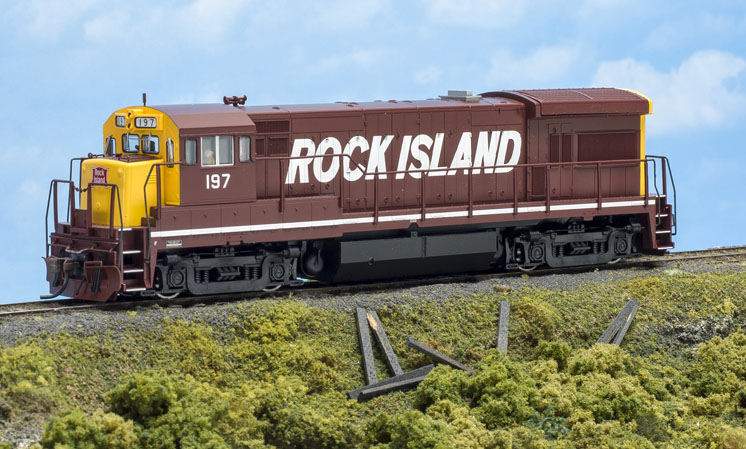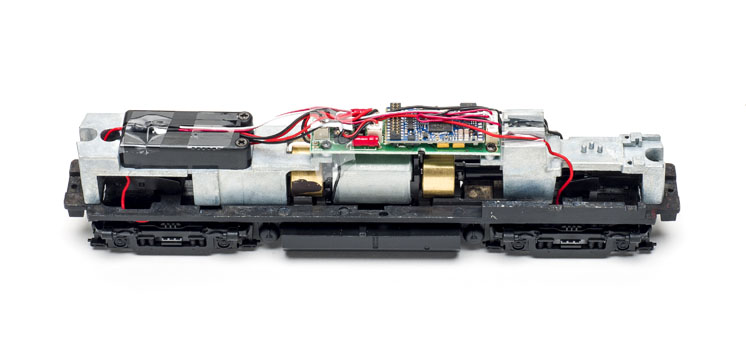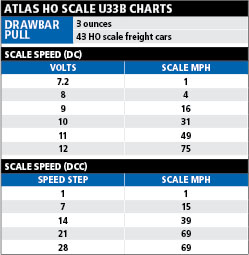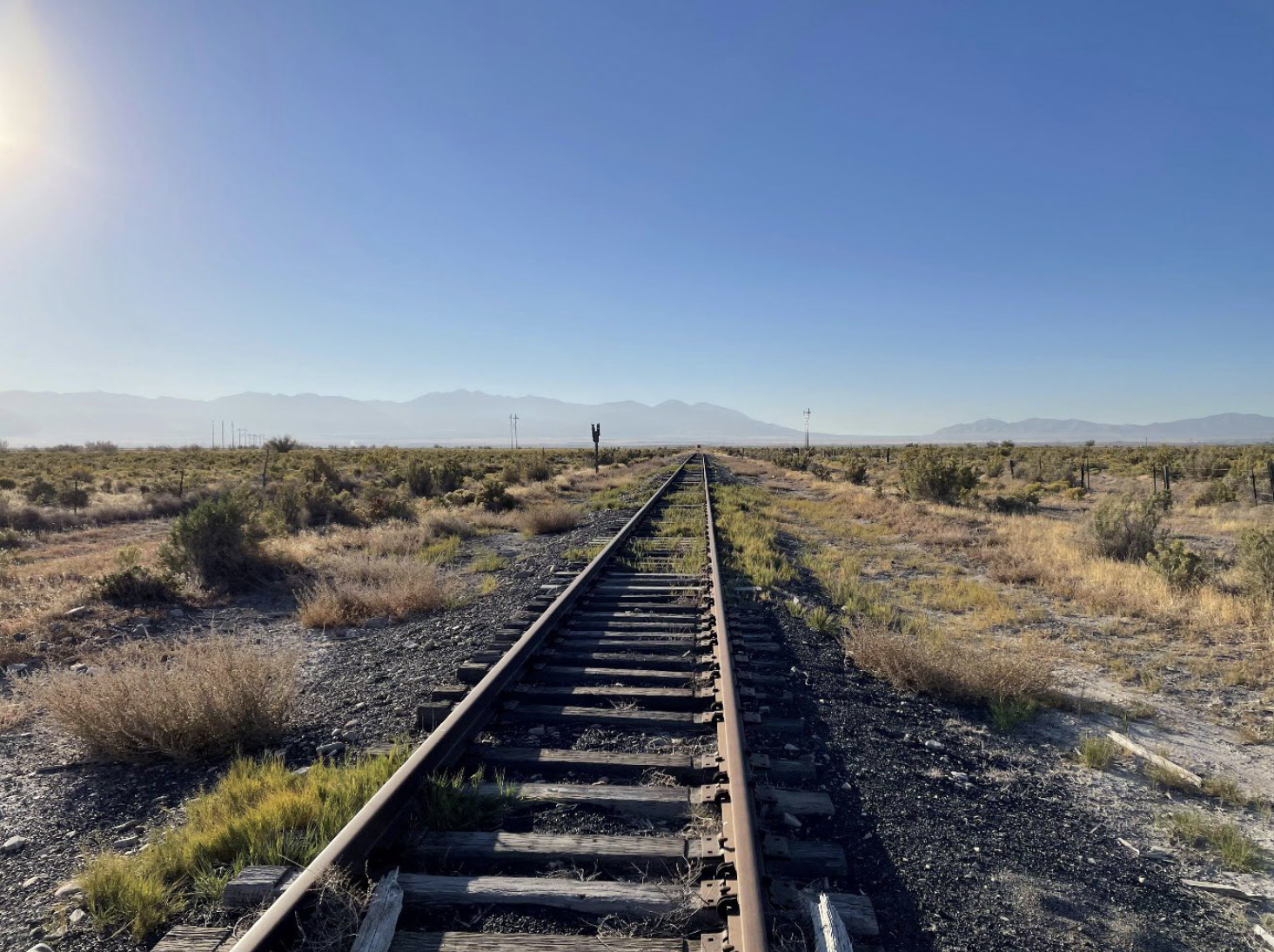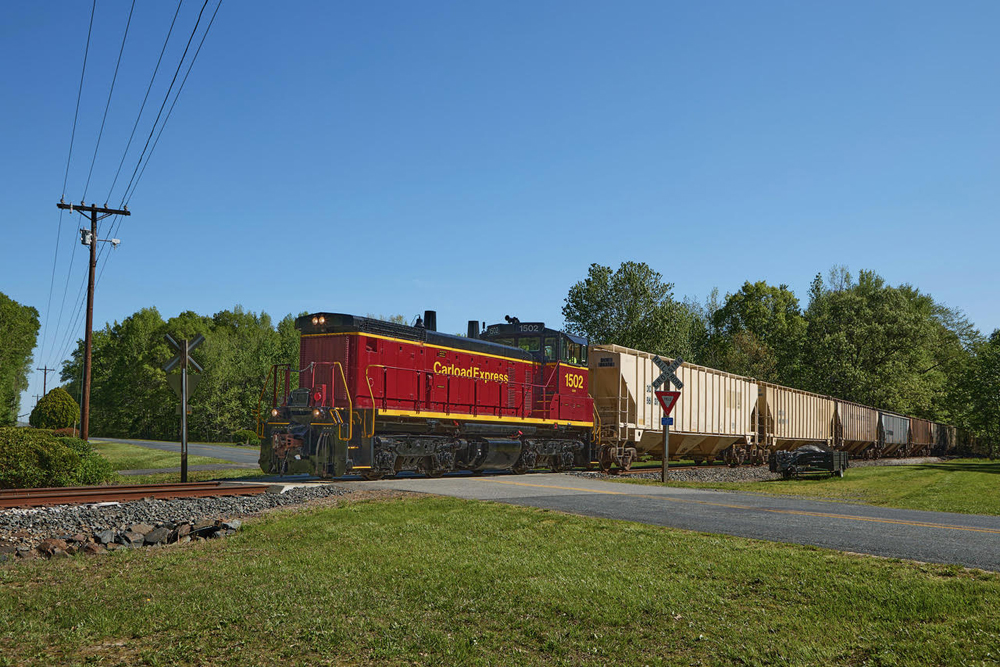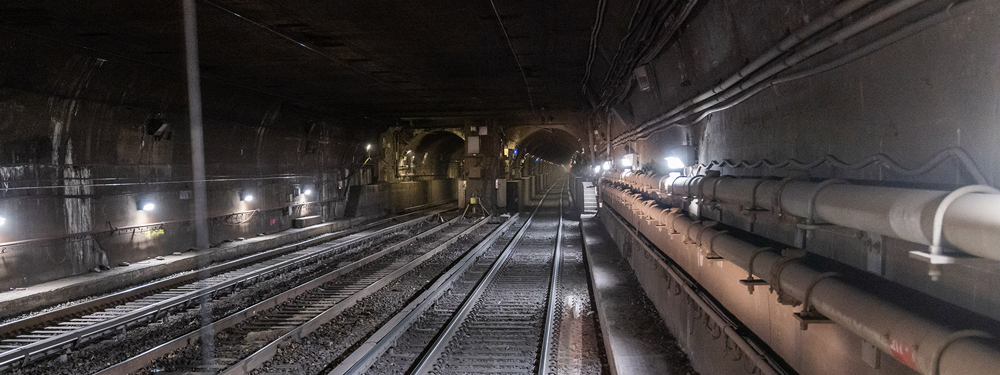The Rock Island was a mighty fine line, but by the time General Electric’s U33B locomotives were delivered in the late 1960s, the Rock was in a hard place. The 3,300hp diesels were designed for fast freight, but the Chicago, Rock Island & Pacific was a granger road full of slow orders and weed-grown track.
It doesn’t have to be that way in your train room, though. All you need is a new, sound-equipped Atlas HO scale U33B and you can create the glory days that never were. The direct-current or ESU LokSound-equipped diesels are also available in Penn Central and Reading & Northern paint, and the externally identical U36B comes in Auto Train and Seaboard Coast Line colors.
The prototype. General Electric built 137 U33Bs between September 1967 and August 1970. This wasn’t the only four-axle locomotive in GE’s catalog at the time. Production of the 3,000hp U30B and the 3,600hp U36B overlapped the U33B, selling from May 1966 to March 1975, and from May 1970 until December 1974, respectively.
All three locomotive models used GE’s 16-cylinder FDL diesel engine. The higher-horsepower U33s and U36s had oversized radiators at the end of their long hoods to handle their higher cooling requirements.
Three railroads purchased new U33Bs. New York Central, and then Penn Central, had the most, with 83. Seaboard Coast Line received 29, all riding on traded-in and rebuilt EMD Blomberg trucks. The Rock Island rostered 25 U33Bs. The Penn Central locomotives were picked up by Conrail, and SCL’s U-boats ended up in CSX paint. The non-SCL locomotives had AAR type B trucks.
U33s built before January 1968 had fairings in front of their radiator wings, but later locomotives didn’t. The first two New York Central U33Bs, 2858 and 2859, and 15 Seaboard Coast Line U33Bs, nos. 1719 to 1734, had the fairings. U33s and U36s appear identical from outside. The extra 300hp is the result of tuning modifications to the engine.
A few U33Bs were sold second-hand, mostly ex-Conrail, ending up with Georgia Central; Guilford-owned Boston & Maine, Delaware & Hudson, and Maine Central; and Reading, Blue Mountain & Northern.
The model. Atlas is offering its model decorated as either a U33B or U36B. Our sample represents Rock Island no. 197 in its as-delivered paint scheme, one of 10 locomotives (numbered 190 to 199) built in May 1969. It was the last of three orders, with the first 10 built between July and September 1968 and five built in January 1969. The first two orders were numbered 285 through 299.
The maroon and yellow paint is opaque, with sharp separations between the colors. The maroon may be a little too brown, but the color varies considerably in prototype photos depending on age and lighting. The large Rock Island lettering on the long hood is clear and sharp, with only a few voids where it crosses the door latches.
Metal grab irons are installed on the ends of the unit, and the handrails are made of flexible plastic. Road-specific details include the firecracker antenna on the cab roof, but cab sunshades that appeared in multiple online photos of Rock Island locomotives are missing. They wouldn’t be difficult to add. Etched-metal radiator grills add extra detail to the top of the model.
The side windows on the cab have silver-painted frames to simulate the movable sash, and the fixed windows and number box covers have black-painted simulated rubber gaskets. The model measures within scale inches of drawings published in the November 1999 Railroad Model Craftsman.
Under the hood. To remove the shell I first removed the draft-gear boxes, then released plastic latches above the front and rear trucks. A die-cast metal frame holds a center-mounted can motor with brass flywheels. All eight wheels are powered and conduct electricity.
Our Digital Command Control (DCC)-equipped model has an ESU LokSound Select decoder mounted to a motherboard with a 21-pin connector. The motherboard is screwed to the metal weights, above the motor. An oval speaker in a plastic enclosure is mounted facing down above the rear truck. Light-emitting diodes (LEDs) mounted at the rear of the locomotive and behind the cab transmit light to the model’s headlights through molded plastic light tubes. There is a slight glow in the cab from the headlight LED.
Painted crew figures are mounted inside the cab, which snaps onto the battery box and walkway casting. Black-painted shields hide the mechanism from view through the windows. The yellow paint on the short hood was also visible inside the cab. It could use a bit of black paint to conceal it.
On the test track. Atlas locomotives with ESU LokSound decoders generally run well, and this model was no exception. I started testing on DC power, and found the model needed 6V for sounds to come on. At 7.2V, the locomotive started to move at 1 scale mph. At 12V, the model reached 75 scale mph, giving it a prototypical speed range.
Drawbar pull was 3 ounces, equivalent to 43 HO freight cars on straight and level track. On DC power, all sounds are automatic. They consist of a startup sequence when the locomotive first receives enough power, then the sounds of the engine speeding up and slowing down to simulate the eight notches of a diesel locomotive. Other sounds, such as the air compressor and “spitter” valves, play at random intervals. The headlights are illuminated in the direction of travel, starting off dim when the locomotive is stopped, then turning bright as it starts to move.
On DCC, I had much more control of the sound and lighting features. Of course, I could sound the bell and horn with function buttons 1 and 2, and turn on the headlight with F0. The headlight operates the same in DCC as it does in DC. The same LED illuminates the headlight and the number boxes, so the number boxes get dim and bright, too. Function 12 allows manual control of headlight brightness.
Atlas specifies a reasonable amount of momentum in the decoder’s programming. The factory default setting was 80 in a range of 0 to 255, so I left that alone.
I got a surprise with the features on the decoder. Atlas has included ESU LokSound’s Full Throttle files, so the function keys operate a little differently than what’s outlined in the quick start guide packed with the locomotive.
I went to the ESU LokSound website (www.esu.eu/en/start/), navigated to the Downloads tab and clicked on Instruction Manuals. Then I chose Digital Decoders, and finally downloaded the LokSound Quick Start Guide Date: 01.05.17, Version: 1. Edition. This had the correct function key assignments.
The Full Throttle package includes a few different sound controls. Function 9 toggles the Drive/Hold feature on and off. This allowed me to set the speed of the locomotive, then vary the sound of the diesel engine with the throttle buttons. The locomotive – or independent – brake is set and released with F10. I find this is more useful during switching maneuvers than when running a road locomotive, but a U33B could’ve had some local switching duties later in its life.
I took the locomotive to the Model Railroader staff layout, the Milwaukee, Racine & Troy, for further testing.
I matched its lugging ability against the 3 percent ruling grade, and the U33B pulled eight freight cars without slipping. The independent brake feature made it fun to switch the yard at Bay Junction, and the Rock Island U-boat looked right at home among the tall grain silos on that part of the layout.
These four-axle U-boats fill a niche for modelers of the 1970s. Whether you want to model an era of slow orders, or fast-freight piggyback traffic, Atlas’ U33B and U36B can supply reliable service to the customers on your layout.
Price: $169.95 (DC no sound, bicentennial scheme $189.95); $279.95 (DCC sound, bicentennial scheme $299.95)
Manufacturer
Atlas Model Railroad Co. Inc.
378 Florence Ave.
Hillside, NJ 07205
www.atlasrr.com
Era: 1967 to 1980 as decorated
Roadnames: U33B: Rock Island (maroon and yellow), Penn Central, and Reading & Northern (two road numbers). U36B: Auto Train and Seaboard Coast Line (American Revolution Bicentennial scheme in one number, and yellow and black). Four numbers per scheme unless noted; undecorated models also available.
Features:
• AAR-B or Blomberg trucks, as appropriate
• Blackened metal wheels, in gauge
• Five-pole skew wound motor with dual brass flywheels
• Direct-current model with eight-pin socket for Digital Command Control decoder
• Directional lighting with golden-white LEDs
• ESU LokSound Select dual-mode decoder on DCC-equipped models
• Plastic knuckle couplers, at correct height
• Weight: 14.8 ounces





